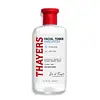What's inside
What's inside
 Key Ingredients
Key Ingredients

No key ingredients
 Benefits
Benefits

 Concerns
Concerns

No concerns
 Ingredients Side-by-side
Ingredients Side-by-side

Water
Skin ConditioningSodium Ascorbyl Phosphate
AntioxidantSodium PCA
HumectantGlycerin
HumectantPolyglutamic Acid
Skin ConditioningCamellia Sinensis Leaf Extract
AntimicrobialTremella Fuciformis Polysaccharide
Emulsion StabilisingFerulic Acid
AntimicrobialHesperidin
EmollientVitis Vinifera Seed Extract
AntimicrobialGinkgo Biloba Leaf Extract
Skin ConditioningPunica Granatum Extract
AstringentResveratrol
AntioxidantPhenethyl Alcohol
MaskingCitrus Aurantifolia Peel Extract
CleansingSorbitan Oleate Decylglucoside Crosspolymer
CleansingCaprylyl Glycol
EmollientBeta-Glucan
Skin ConditioningAcetyl Glucosamine
Skin ConditioningEthylhexylglycerin
Skin ConditioningPinus Strobus Bark Extract
Skin ConditioningGlycine Soja Sterols
EmollientSophora Japonica Fruit Extract
Skin ConditioningSilybum Marianum Fruit Extract
Skin ConditioningThioctic Acid
AntioxidantWater, Sodium Ascorbyl Phosphate, Sodium PCA, Glycerin, Polyglutamic Acid, Camellia Sinensis Leaf Extract, Tremella Fuciformis Polysaccharide, Ferulic Acid, Hesperidin, Vitis Vinifera Seed Extract, Ginkgo Biloba Leaf Extract, Punica Granatum Extract, Resveratrol, Phenethyl Alcohol, Citrus Aurantifolia Peel Extract, Sorbitan Oleate Decylglucoside Crosspolymer, Caprylyl Glycol, Beta-Glucan, Acetyl Glucosamine, Ethylhexylglycerin, Pinus Strobus Bark Extract, Glycine Soja Sterols, Sophora Japonica Fruit Extract, Silybum Marianum Fruit Extract, Thioctic Acid
 Reviews
Reviews

Ingredients Explained
These ingredients are found in both products.
Ingredients higher up in an ingredient list are typically present in a larger amount.
Caprylyl Glycol is a humectant and emollient, meaning it attracts and preserves moisture.
It is a common ingredient in many products, especially those designed to hydrate skin. The primary benefits are retaining moisture, skin softening, and promoting a healthy skin barrier.
Though Caprylyl Glycol is an alcohol derived from fatty acids, it is not the kind that can dry out skin.
This ingredient is also used as a preservative to extend the life of products. It has slight antimicrobial properties.
Learn more about Caprylyl GlycolEthylhexylglycerin (we can't pronounce this either) is commonly used as a preservative and skin softener. It is derived from glyceryl.
You might see Ethylhexylglycerin often paired with other preservatives such as phenoxyethanol. Ethylhexylglycerin has been found to increase the effectiveness of these other preservatives.
Glycerin is already naturally found in your skin. It helps moisturize and protect your skin.
A study from 2016 found glycerin to be more effective as a humectant than AHAs and hyaluronic acid.
As a humectant, it helps the skin stay hydrated by pulling moisture to your skin. The low molecular weight of glycerin allows it to pull moisture into the deeper layers of your skin.
Hydrated skin improves your skin barrier; Your skin barrier helps protect against irritants and bacteria.
Glycerin has also been found to have antimicrobial and antiviral properties. Due to these properties, glycerin is often used in wound and burn treatments.
In cosmetics, glycerin is usually derived from plants such as soybean or palm. However, it can also be sourced from animals, such as tallow or animal fat.
This ingredient is organic, colorless, odorless, and non-toxic.
Glycerin is the name for this ingredient in American English. British English uses Glycerol/Glycerine.
Learn more about GlycerinWater. It's the most common cosmetic ingredient of all. You'll usually see it at the top of ingredient lists, meaning that it makes up the largest part of the product.
So why is it so popular? Water most often acts as a solvent - this means that it helps dissolve other ingredients into the formulation.
You'll also recognize water as that liquid we all need to stay alive. If you see this, drink a glass of water. Stay hydrated!
Learn more about Water